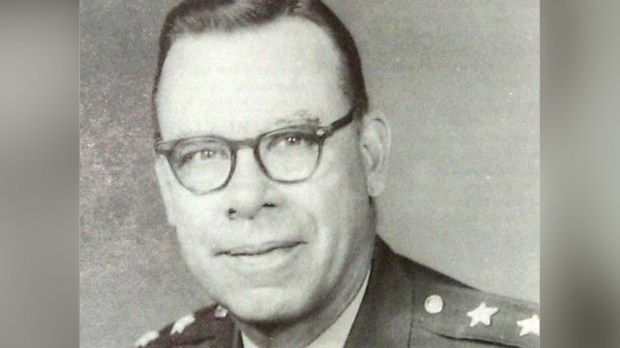Among those soldiers who landed behind German lines in Normandy on June 6, 1944 was the legendary chaplain of the unit, Fr. Francis L. Sampson (1912-1996). It was he (and not the character played by Tom Hanks in Saving Private Ryan), who days later was ordered by military authorities to find Fritz Niland, the real-life “Private Ryan,” who had lost his three brothers on D-Day.
Father Sampson – better known as “Father Sam” – arrived in Normandy by parachute. The first thing he did when he landed was desperately look for his Mass kit, which he had lost during his landing. It was hard for him to locate in the dark, under heavy enemy fire, among the explosions, but he did.
The universality of the Church, in the trenches
His troubles, of course, did not end there. That same day, while attending to several injured on a farm, he bumped into two German soldiers. They were about to shoot him, but then a third German soldier saved him, after showing his comrades the medal Father Sam wore on his neck, and convincing them not to kill a priest.
“It was touching to to witness the universality of the Church that day,” Father Sam wrote in his memoirs, about being saved by a Catholic brother who happened to be his “enemy.”
An impressive homily
A few days later, Father Sam celebrated Mass before a group of nurses in a church that had been completely bombed. Only two walls remained standing, but the crucifix and the images of St. Peter and St. Paul were intact. Everyone considered it to be a miracle.
Before these ruins, Father Sam gave this homily, brief as the dictates of war demanded:
The image of the naked Galilean hanging from the cross has always inspired great love and fierce hate. Nero sought to make the cross a hateful image by putting Christians to death upon it, pouring pitch upon them, and lighting Rome with these flaming human crosses. Julian the Apostate said that he would make the world forget the Man on the cross, but in his final agony he had to acknowledge, “Thou has conquered, Galilean.” Communists forbid its presence because they fear its power against their evil designs. Hitler has tried to replace the image of our Blessed Lord on the cross with a stupid swastika. Invectives, false philosophies, violence, and every diabolical scheme have been used to tear the Christ from the cross and the crucifix from the church. Nevertheless, like the bombs that were dropped on this chapel, they have only succeeded in making the cross stand out more and more in bold relief. The image we love grows greater in our understanding because of the vehemence of the hate it occasions in wicked men. Each of us has that sacred image stamped upon his soul. Like the chapel, we are Temples of God. And no matter how we are torn by the bombs of tragedy and trial and assault from without, the image of the crucified remains if we want it to. Now at the foot of this cross let us renew our baptismal vows. Let us promise to shield forever His image in our hearts.
Stuff of legend
Father Sampson was captured by the Germans and spent six months in a prison camp. Once released, he returned to the front with the legendary 101st Airborne. Cornelius Ryan’s celebrated 1959 book, The Longest Day, which chronicles the Normandy landing, speaks extensively of him.
He also served in Korea and although he had already retired, he was appointed head of the military chaplains in 1967, as he did not want to stop attending his fellow parachutists in Vietnam.
Next year marks the centenary of his birth, and tributes are being prepared for a man who wrote some of the deepest passages of American military history.
This article was translated from the Spanish edition of Aleteia.

